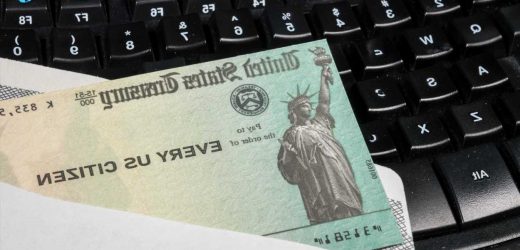WHILE more than 161 million Americans have already received their $1,400 stimulus checks, for some waiting for the payment to arrive by mail the wait has been a little longer.
For those Americans, which include Social Security (SS) recipients and SS beneficiaries without a US address, the checks were due to be mailed out beginning April 9 and April 23 respectively.
The Internal Revenue Service sent out 600,000 payments to this group last week.
Social Security beneficiaries with a foreign address, and who do not typically file a tax return, should have received their stimulus checks via direct deposit or Direct Express Card on or around April 21.
For beneficiaries with a non-US address who receive their Social Security payments through the mail, they will be receiving a paper stimulus check, which were mailed beginning April 23.
As with the first two rounds of stimulus payments, the IRS only sent the checks to those who filed a 2020 or 2019 tax return, and to people who used the IRS' Non-Filer tool.
Retired railroad beneficiaries should also have their stimulus payments by now, as should those who qualify for Department of Veterans Affairs benefits. Those payments were sent out on April 14.
For anyone experiencing issues with receiving payments, there are a number of self-service options if you're in need of an explanation as to why.
The Social Security Administration and Veterans Affairs will refer you back to the IRS if there's an issue with your payment. However, the IRS has asked people not to call with any stimulus-related queries.
To best way to keep track of the status of your payment is with the Get My Payment tool on the IRS' website.
The platform should display a message about your payment status, whether your payment has been scheduled to send if your payment will be made via direct deposit, paper check or EIP card and the date your stimulus money was issued.
You might also get an error message saying for example it can't determine your status yet.
That can just mean the IRS is still processing your payment.
If the IRS tool tells you that your payment has been issued but you still have not received it you might need to contact IRS and request a payment trace.
If you or your eligible spouse and dependents did not receive all or part of your stimulus payments, you may need to file a 2020 tax return with the IRS and claim the Recovery Rebate Credit.
You may need to do this even if you don’t usually file, to provide information the IRS needs to send missing payments. More about how to do that can be learned here.
Additionally, for those who have someone managing their federal benefits account, known as a representative payee, that person should discuss your benefits with you, SSA says.
So should you wish to use to money, the person managing your account – whether that be a relative, friend, or someone appointed by an organization – should provide you with that payment.
"Your Individual Representative Payee (PDF) should have received your EIP to the same direct deposit account or Direct Express card as your monthly Social Security or SSI payment," the SSA says on its website.
"For an Organizational Representative Payee, the payee likely received the EIP electronically or by paper check in the mail."
The March Stimulus Law gives the Internal Revenue Service (IRS) and U.S. Treasury until December to send out all checks in the latest round of stimulus, according to CNET.
Source: Read Full Article




